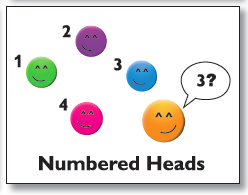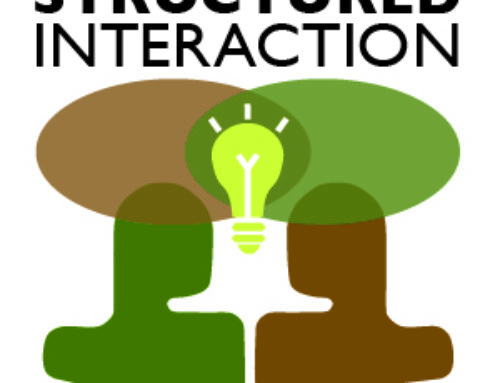 In this series, we discuss Student Interaction Routines, which are task-based strategies that help ensure each student has abundant strategic practice using new language for meaningful purposes. Developing a robust wheelhouse of interaction routines enhances student engagement and increases productive talk time.
In this series, we discuss Student Interaction Routines, which are task-based strategies that help ensure each student has abundant strategic practice using new language for meaningful purposes. Developing a robust wheelhouse of interaction routines enhances student engagement and increases productive talk time.
Numbered Heads Together is a small-group interaction routine in which students practice negotiating language by generating multiple responses to a prompt. In their groups, students share ideas, listen to one another’s ideas, and share out what they talked about. This activity can be used to generate multiple responses or to collaboratively agree on a common response.
The beauty of this routine is that it increases accountability for all students. They feel positive peer pressure to participate and represent their team’s best thinking. This motivates students to listen closely, ask questions, and explain their reasoning clearly.
As with other interaction routines, model the activity and language structures. Consider using Discussion Cards for Pose a Question, Build on an Idea, and/or Challenge an Idea to support students as they collaborate on their responses.
 Students form small groups by numbering off, 1–4.
Students form small groups by numbering off, 1–4.- The teacher provides think/talk/write time for students to discuss a prompt. Depending on the performance task, they generate multiple credible responses or come to agreement on a response. Students may chart their ideas, log their summaries, etc.
- Using a spinner, drawing a number card, or rolling a die, the teacher randomly calls a number from 1 to 4.
- All students with the selected number must stand and share their group’s thinking using a public speaking voice.
- Mix it up! Once a number has shared, rearrange groups. Call twos together, number that group 1–4, and have them respond to another prompt. The shuffling keeps students moving and working with more classmates, which makes the routine feel like a game.
Find more details on Numbered Heads Together and other interaction routines in the Cue Card Booklet.

Susana Dutro, Co-founder and CEO
Donna Smith, Director of Research and Communications and District Support Lead
This blog is one in a series on Student Interaction Routines. Read the additional installments:
Growing English Proficiency: What’s Practice Got to Do with It?
Growing English Proficiency: Talking Stick
Growing English Proficiency: Lines of Communication
Visit the E.L. Achieve blog regularly for details on different routines and creative variations you can use with your students.
This blog was previously published with the title, “Blog Series: Empowering students to grow their language – Collaboration Adds Up: Numbered Heads Together.”


